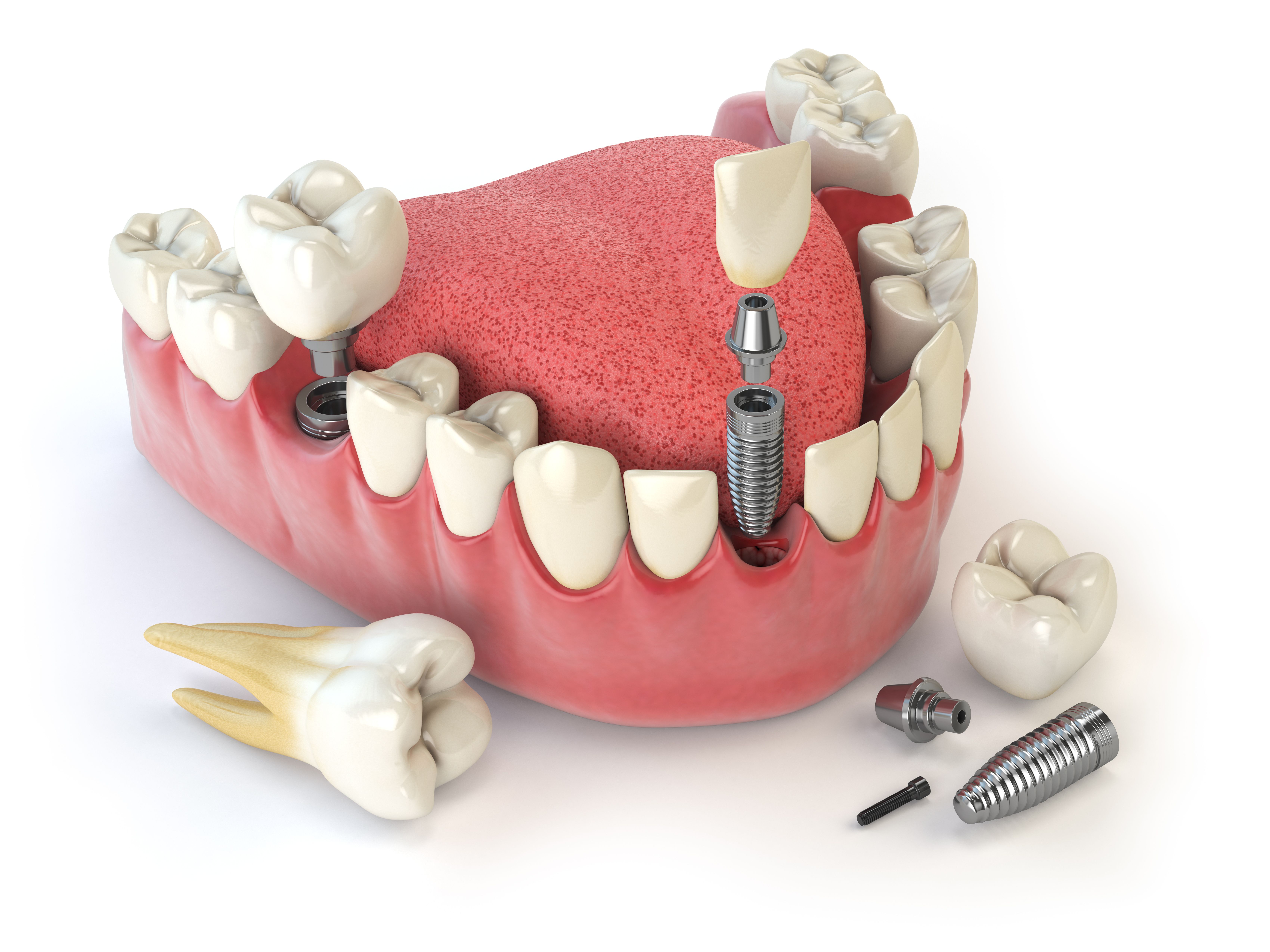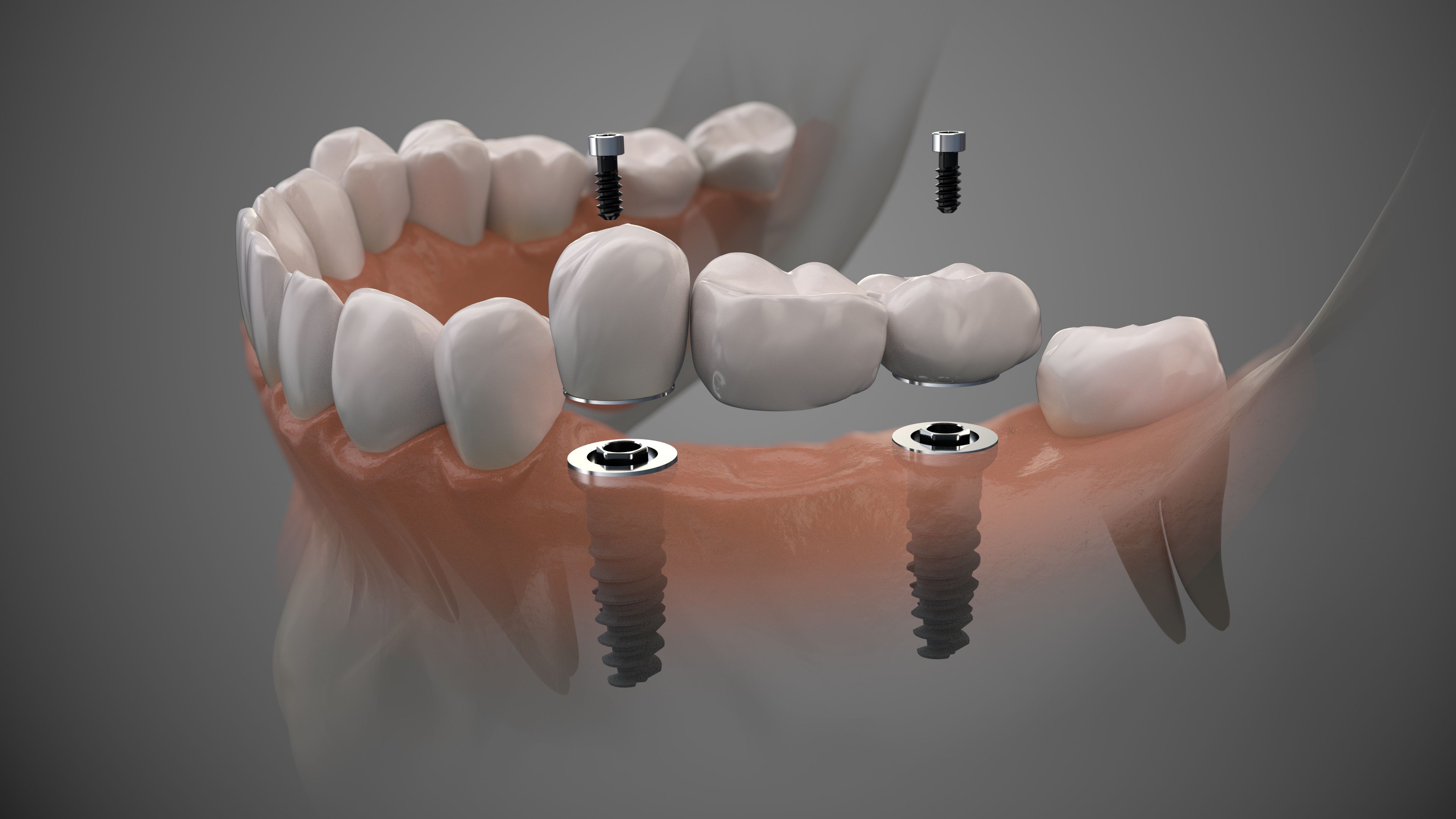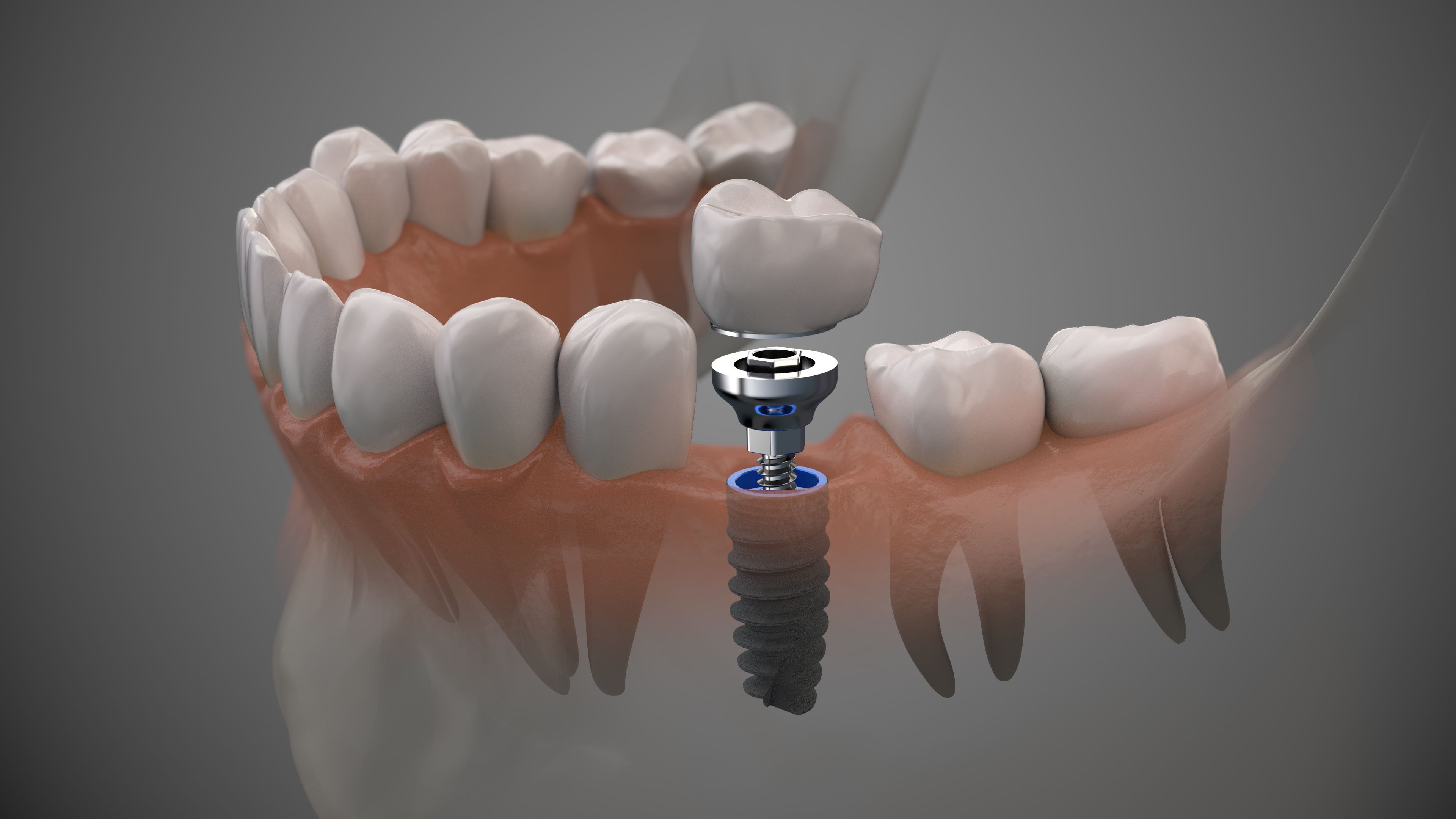How to choose between cement-retained or screw-retained implants
The pros and cons of these two implant types and when each should be implemented.

Ideally, every implant would have it all: Esthetics, functionality, longevity, and durability. But different types of implants, such as screw-retained and cement-retained, come with varied associated strengths and weaknesses. If you can’t have it all, which attributes should you prioritize for a particular case?
There are many factors to take into consideration when deciding between cement- or screw-retained implants, including retrievability, esthetics, location, and even personal preference. While each implant option comes with its own set of pros and cons, studies have found that complication rates for both are nearly identical, at 3-5%.1 This means that no matter which way you go, you’ve got a high chance of success—provided you take each case’s indications into account.
So, when should you opt for the cement-retained option over screw-retained—and how do the two types measure up?
Screw-retained implants

Pro: Lack of cement
Because screw-retained implants don’t use cement to connect the implant with the abutment and the abutment with the crown, they are exempt from the potential complications due to improper cement cleanup.
While clinical performance in regards to failure rates is similar with both screw- and cement-retained implants, a recent study found that overall, screw-retained restorations had fewer biologic and technical complications.2 This is partially due to the fact that screw-retained options eliminate the risk of complications that arise due to excess residual cement. Leftover cement can provide a conducive environment for bacteria, which can lead to infection problems and implant failure down the road.
Pro: Retrieval
One huge advantage of screw-retained restorations is retrievability. If complications arise, problems can be more easily addressed thanks to the removable nature of the crown and or abutment. This allows for simplified removal for implant repair, cleaning, direct visualization of the implant or soft-tissue exam.
“As a tech guy, I like to, whenever possible, have a back door, some way to ‘undo’ things,” says John Flucke, DDS, who practices in Lee’s Summit, Missouri. “That is the reason I prefer screw retained. If something goes wrong somewhere down the road, you can take the case apart and start over.”
This ability to address damage or wear and tear without having to remake the restoration is one reason that screw-retained implants are high in popularity. While screws may loosen over time, retightening them is a simple fix.
Con: Esthetics issues
What screw-retained implants offer in flexibility is tempered by their lack of esthetics. Because these implants screw into the post through the abutment, a visible screw hole is left in the prosthetic.
“The pros of screw-retained is the ability to ‘undo’ if need be, but because the screw hole needs to be filled with composite, often esthetics are not quite as good,” Dr Flucke says.
The screw access hole, even when covered with composite, can often appear noticeably uneven. This presents a big concern to patients, particularly in anterior implants where esthetics are critical. However, when the design of the case allows, the screw access hole can be placed where it cannot be easily seen without looking for it directly.
Cement-Retained

Pro: Improved esthetics
If you’re working in the esthetic zone, it goes without saying that esthetics are paramount. Cement-retained implants offer superior esthetics compared to their screw-retained counterparts. This is because there is no need for an access hole when cementing the prosthesis directly to the implant abutment. The resulting appearance is more like that of a natural tooth.
“While I generally prefer screw-retained, in cases with a high esthetic demand, cemented prosthetics are often needed,” Dr Flucke says. “Cement retained have no holes and therefore are esthetically superior in most instances.”
With advances in cements, new radiolucent cements make it even easier to achieve a natural look. However, being virtually invisible makes these cements trickier to clean up.
Con: Cement removal
This difficult cement cleanup can have major repercussions for the success of the restoration. Modern cements are often difficult to see, which means it’s easier to accidentally leave behind residual cement. As mentioned before, this excess adhesive makes a great environment for bacteria, which can jeopardize osseointegration and increase the risk of cement failure or gum inflammation and infection. Poor removal of excess cement has also been linked to increased risk of peri-implantitis and peri-implant mucositis.3
Con: No re-dos
Retrievability is a challenge with cemented prosthetics. A big drawback to cemented implants is that there are few options if repairs or adjustments become necessary. Because the restoration is cemented to a screw-retained abutment, there’s no way to remove the restoration it if the screw becomes loose. Generally, this results in total destruction of the restoration to access the screw.
“While cemented implants are more esthetic, if the material chips or anything goes wrong in the future, they are much more difficult to undo,” Dr Flucke explains.
Luckily, cement-retained implants do have a higher resistance to porcelain fracture than screw-retained alternatives, so theoretically the restoration could retain its esthetics and structure for longer. However, if a cemented implant crown does need repair, it often means the entire restoration will need to be recreated, leading to extra cost for the patient.
The verdict
The bottom line is clinicians need to evaluate each case and its indications individually and make determinations accordingly. For cases where esthetics are prioritized, cement-retained implants are the superior choice. When esthetics are of lower priority, screw-retained restorations provide clinicians with increased flexibility and eliminate the risk of infection or implant failure due to excess cement.
Regardless of the chosen method of retention, with careful planning and execution, practitioners can create a long-lasting restoration that meets the patient’s needs.
References
- Pjetursson BE, Thoma D, Jung R, Zwahlen M, Zembic A. A systematic review of the survival and complication rates of implant-supported fixed dental prostheses (FDPs) after a mean observation period of at least 5 years. Clin Oral Implants Res. 2012;23 Suppl 6:22-38. doi:10.1111/j.1600-0501.2012.02546.x
- Wittneben JG, Millen C, Brägger U. Clinical performance of screw- versus cement-retained fixed implant-supported reconstructions--a systematic review. Int J Oral Maxillofac Implants. 2014;29 Suppl:84-98. doi:10.11607/jomi.2014suppl.g2.1
- Wittneben, JG, Joda, T, Weber, HP,Brägger, U. Screw retained vs. cement retained implant-supported fixed dental prosthesis. Periodontology 2000. 2017;73, 141-151